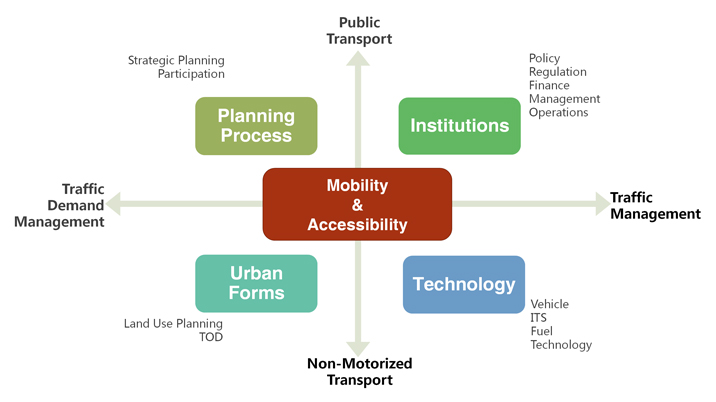The year 2011 was a historic moment in the urbanization of China, as its urban population exceeded its rural population for the first time. About 350 million new urban residents are expected to migrate to cities over the coming 20 years. Urban development on such a scale is both a challenge and an opportunity for urban transport.
A challenge, as current trends are unsustainable both at local and national level.
Locally, the rapid growth in car ownership has enabled greater personal mobility for many but has also brought traffic congestion, accidents, and air pollution. Slow and congested transport systems are beginning to stifle the efficiency of the urban economy. The construction of new roads to accommodate traffic leads to urban sprawl and accelerated traffic growth and hampers the mobility of those who do not own a car.
Nationally, excessive conversion of farmland for urban development to build new roads consumes scarce land resources and impacts the country’s ecological systems. Rising fuel consumption also endangers the nation’s long-term energy security, while growing emissions from urban transport render the national objectives of CO2 reduction difficult to achieve.
An opportunity, as the recognition of urban transport’s spillover effects has led to a new policy emphasis on public transport priority and sustainable urban transport development. National policy has been promoting a ‘people-centered’ development concept, which emphasizes the movement of people rather than the movement of vehicles. It also calls for developing a “resource-saving and environmentally-friendly” society in line with the national CO2 intensity target of a 40-45% reduction from 2005 levels by 2020.
Given these goals, Chinese cities have an opportunity to plan the development of their cities in a way that minimizes the need for travel and directs a large share of investment towards the development of safe, clean and affordable transport systems.
To seize this opportunity and help turn this policy direction into on the ground actions, the Government of China and the World Bank strengthened their partnership to support sustainable urban transport. While urban transport historically represented 8 percent of World Bank lending in the transport sector in China, it now represents 36 percent of all transport projects either ongoing or under preparation (17 projects with a total value of about US$2 billion).
The composition of these projects is also shifting from an earlier focus on road infrastructure development to a more diverse and comprehensive development agenda which covers public transport, traffic engineering and management, road safety, travel demand management, walking and cycling, sustainable land use planning, and integration across modes.
This program of lending and analytical work aims at accelerating the ongoing transformation in urban transport policy and practice in China, by supporting development of national level policy frameworks, piloting institutional and technological innovations with potential for scale up, and accelerating the shift to more sustainable forms of transport. The ongoing work on China in urban transport resolves around several key themes, some of which are highlighted below.
For further information on the program, please contact Ms. SHANG Yu: yshang@worldbank.org


